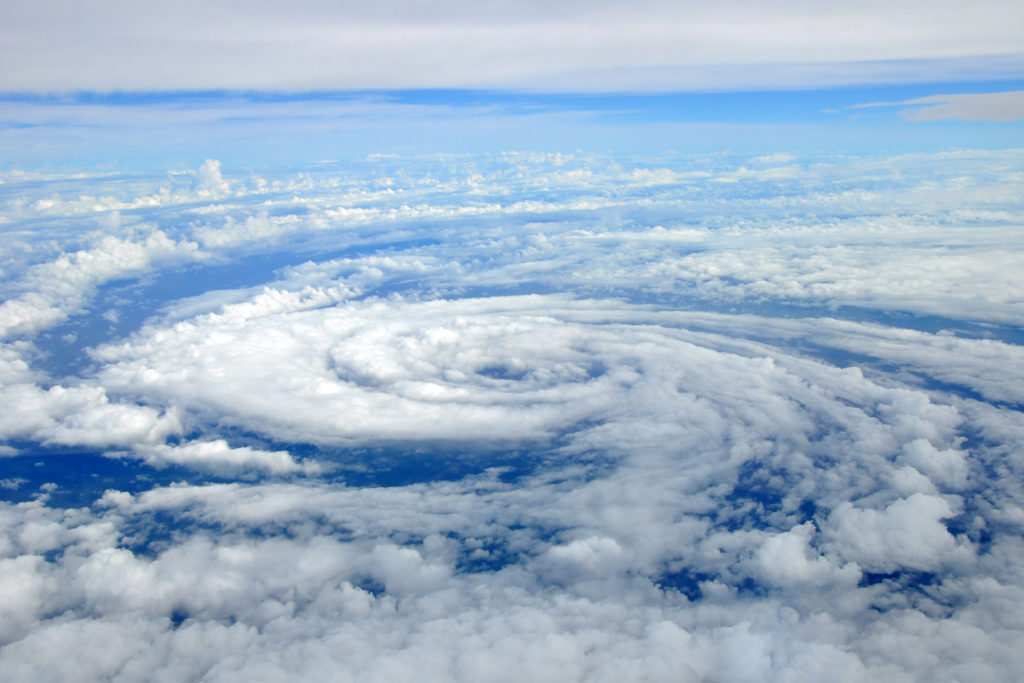What is a Hurricane?

What is a Hurricane?
A hurricane is a huge storm that generally forms over warm ocean water near the equator. The warm air above the ocean rises in an upward direction and creates an area of low pressure below, air from the surrounding areas push in and tries to fill the area with low air pressure which becomes warm and moist and starts rising. As the warm and moist air starts rising, the surrounding area again tries to fill in. And this process keeps going till the water in the air form clouds. Clouds and wind start to spin around totally charged with the ocean” heat and water vapor. And this is how a hurricane is formed.
A hurricane is a huge storm that usually forms over waters near the equator.
Summer thunderstorms usually have rain, thunder and lightning and sometimes strong gusty winds. Sometimes the power even goes out. But some areas of the world experience a really extreme kind of storm – a hurricane.
Hurricanes are big, powerful storms that have strong winds. And I mean strong! In order to be considered a hurricane, a storm’s winds have to be blowing faster than 119 kilometres an hour. That’s faster than a car zooming down the highway. Sometimes you will also hear this kind of storm called a cyclone or a typhoon, but they are all just different names for the same thing.
From space, many hurricanes look like big, swirling storms that have a really cool shape. That’s right, a circle!
The clouds wind around a space in the centre of the hurricane called the eye. It even sort of looks like an eyeball. The eyes wall surrounds the eye and the most damaging winds are found there. Then comes the rain band made up of a series of dense clouds which gives the hurricane its pin-wheel like appearance.
Now a hurricane’s shape is pretty cool, but it is not the only thing that is special about this kind of storm. Everything has to be just right for a hurricane to form. It is kind of like a puzzle.
The first piece of the hurricane puzzle is the warm ocean water. The water has to be at least 27o Celsius or about as warm as a swimming pool, for a hurricane to form. The warm water causes the air above it to warm up and rise high into the sky. The warm air is very humid, which means that there is a lot of water in it. As the air rises in to the sky, other air rushes in to take its place. The air that rushes in gets warm and humid too and then it rises high into the sky as well. As the air rises it cools and clouds start to form – lots of them.
High in the sky is also where we find the second thing that’s important for making a hurricane : wind. And not just any wind. The wind that helps to make a hurricane has to be calm and steady. It can’t be the kind of wind that blows really hard for a moment or two and then calms down again. If there are sudden gusts like that, the story can get blown apart, kind of like how a candle gets blown out.
But if there is warm, damp air along with those steady winds and it stays like that for a few days, the rest of the pieces that make up a hurricane fall into place.
The steady winds push the growing storm over the ocean and the warm water gives the storm energy. It causes more air to rise, more clouds to form and the winds inside the hurricane to become stronger.
In fact, the only place where it’s not very windy is in the hurricane’s eye. It is actually very calm in the eye, even though it is right in the middle of the storm. As it grows, the hurricane also starts to turn.
It spins around with the eye in the centre kind of like a top. As long as hurricanes have that warm air for fuel, they can keep going and keep growing. But when they reach land or pass over cooler water, they lose their warm air, so they start to fall apart. Hurricanes usually leave behind a lot of rain though. Sometimes the rain can last for days.
They also can push a lot of ocean water on to the shore, which can cause a lot of floods. But people can prepare for hurricanes especially if they know when they are going to happen.
For example, most hurricanes near North America happen between May and November every year because that is when the different pieces that make a hurricane fit together the best. And scientists have lots of tools to try and track the hurricanes. They use what they know about science to make really good guesses about where they will pop up, where they will go, how big they will be and how long they will last.
Hurricanes can also be called giant engines that use warm and moist air as their fuel. When we see from the top, hurricanes can be as huge as 300 miles wide.
In places where hurricanes tend to happen too often they even build buildings that can survive through these conditions. And if you live or go on vacation to such places you can be prepared too. You can talk to grown ups about what you can do if a hurricane happens.
That might mean like bringing in things from outside to protect them from strong winds or it might mean helping to prepare a kit with food, water, flashlights and a radio.






Responses